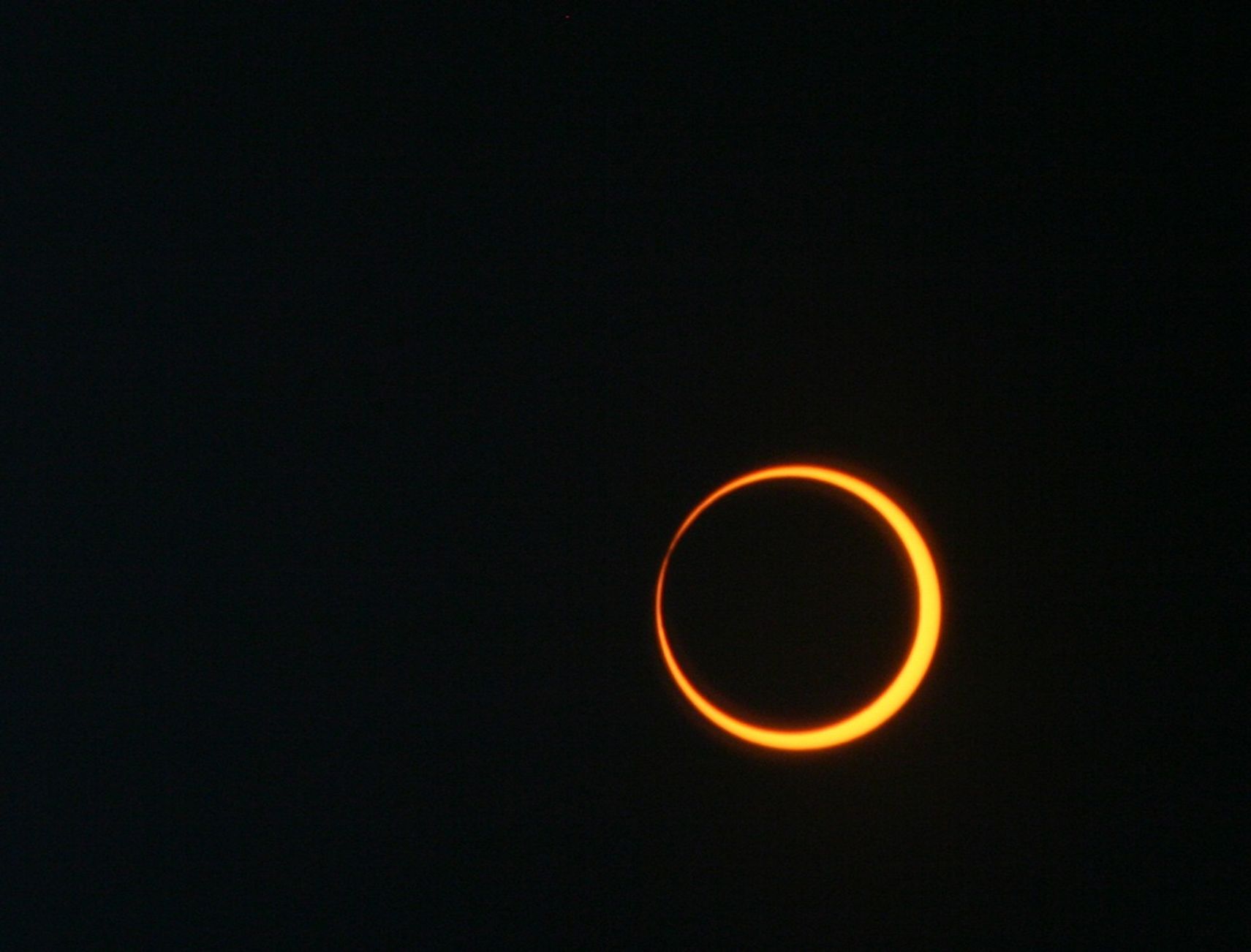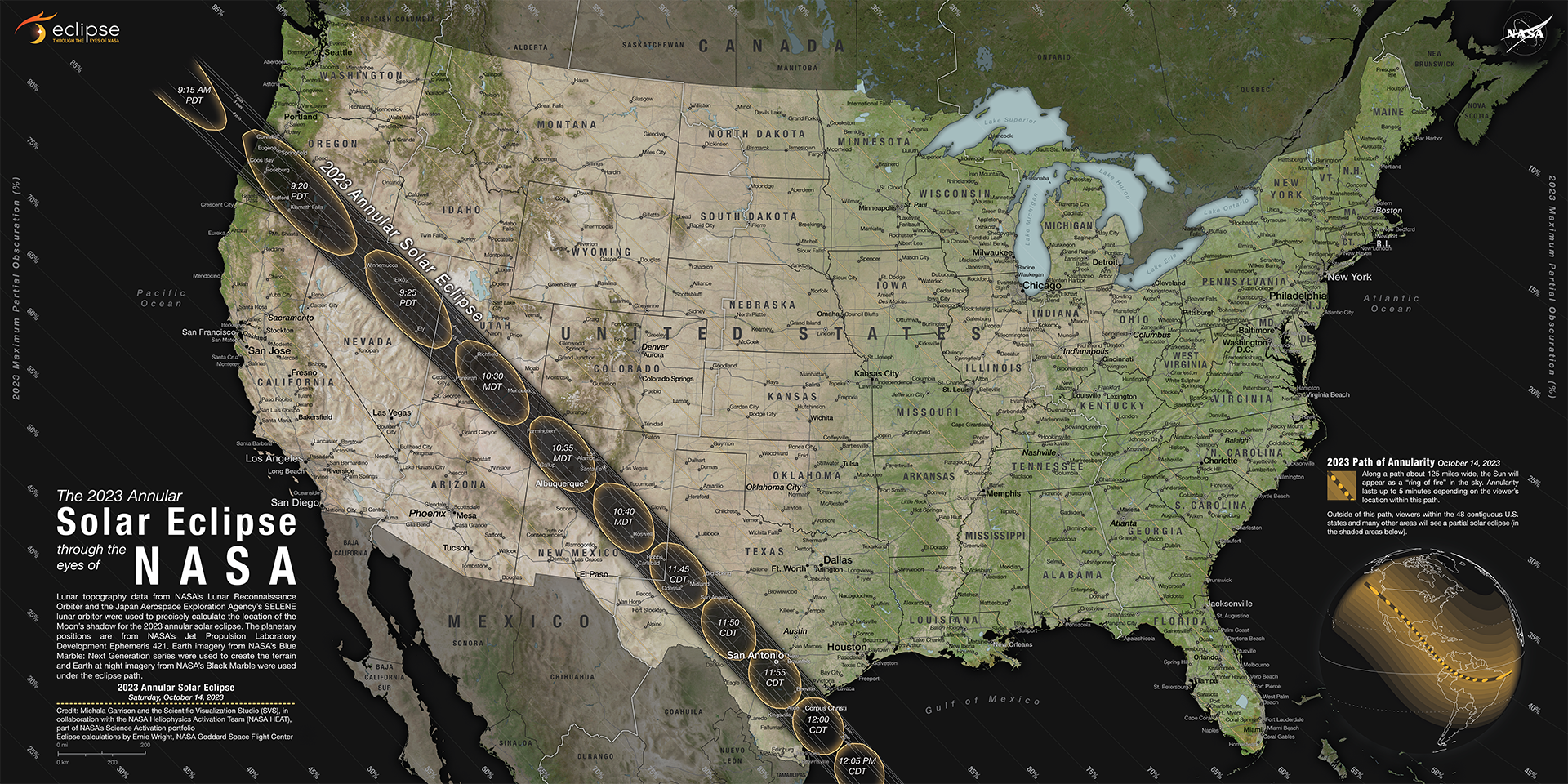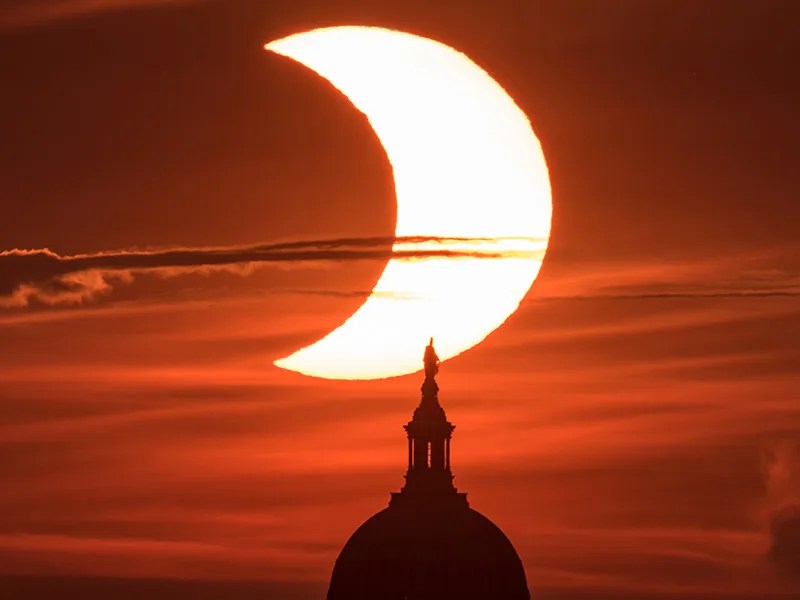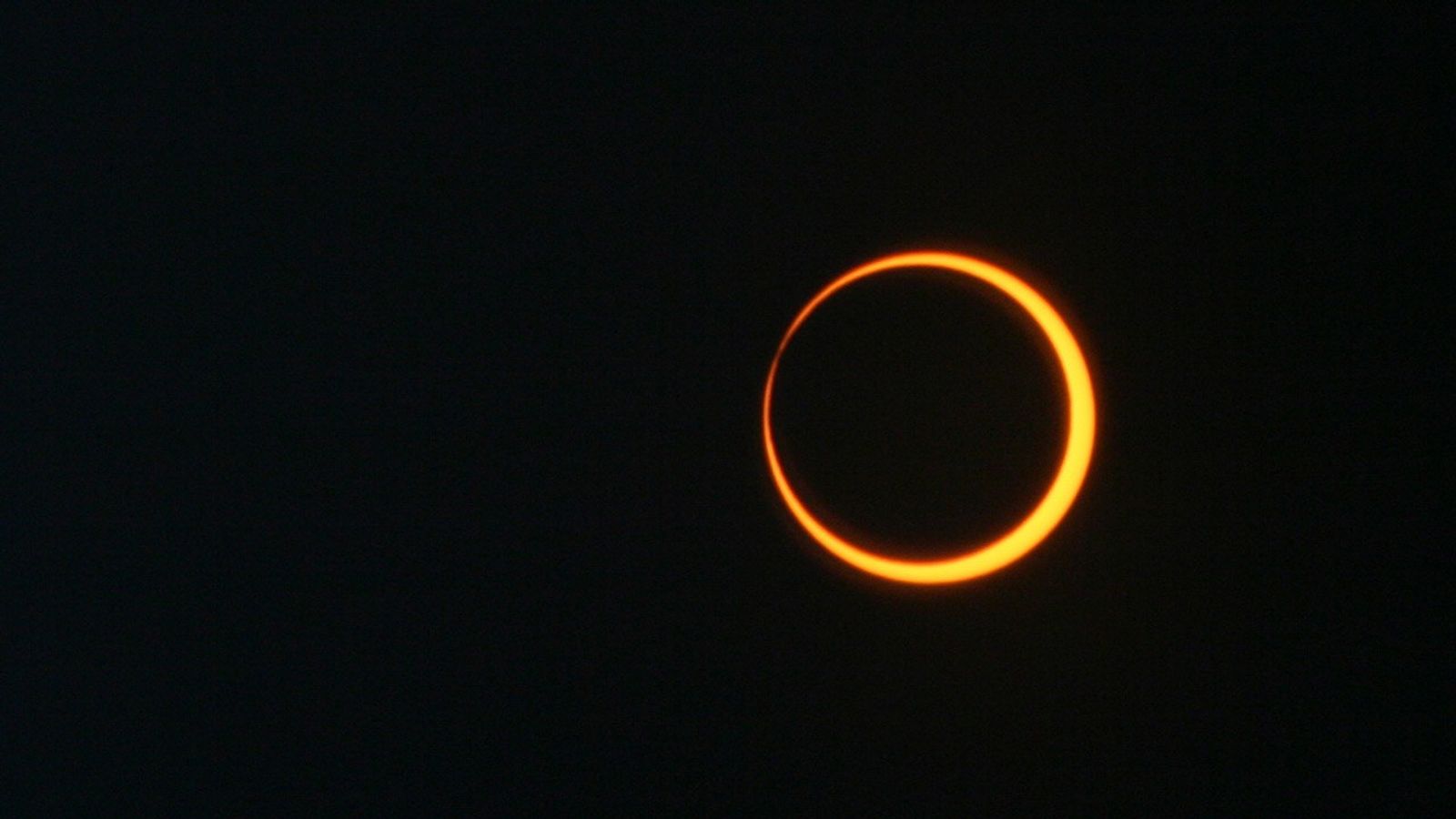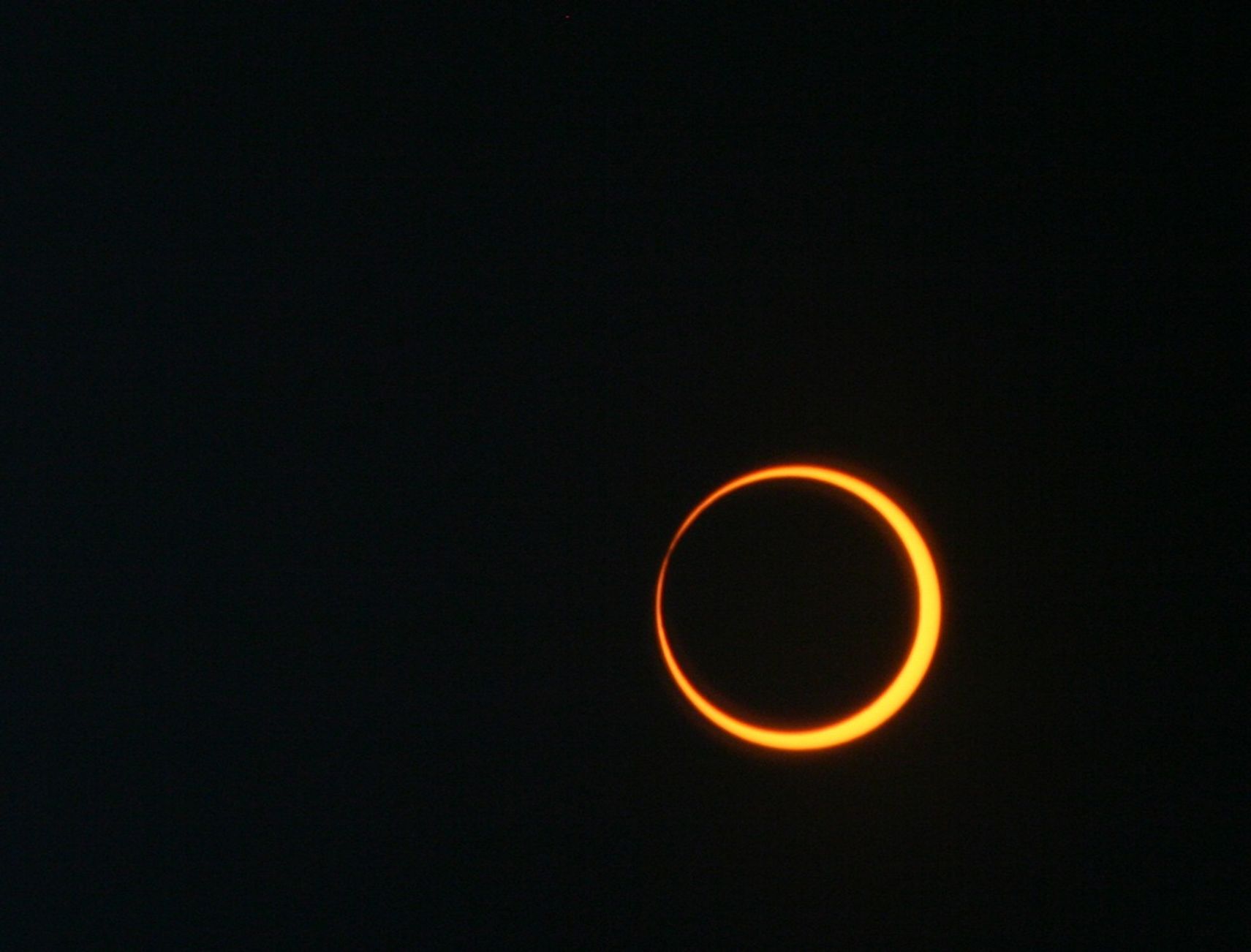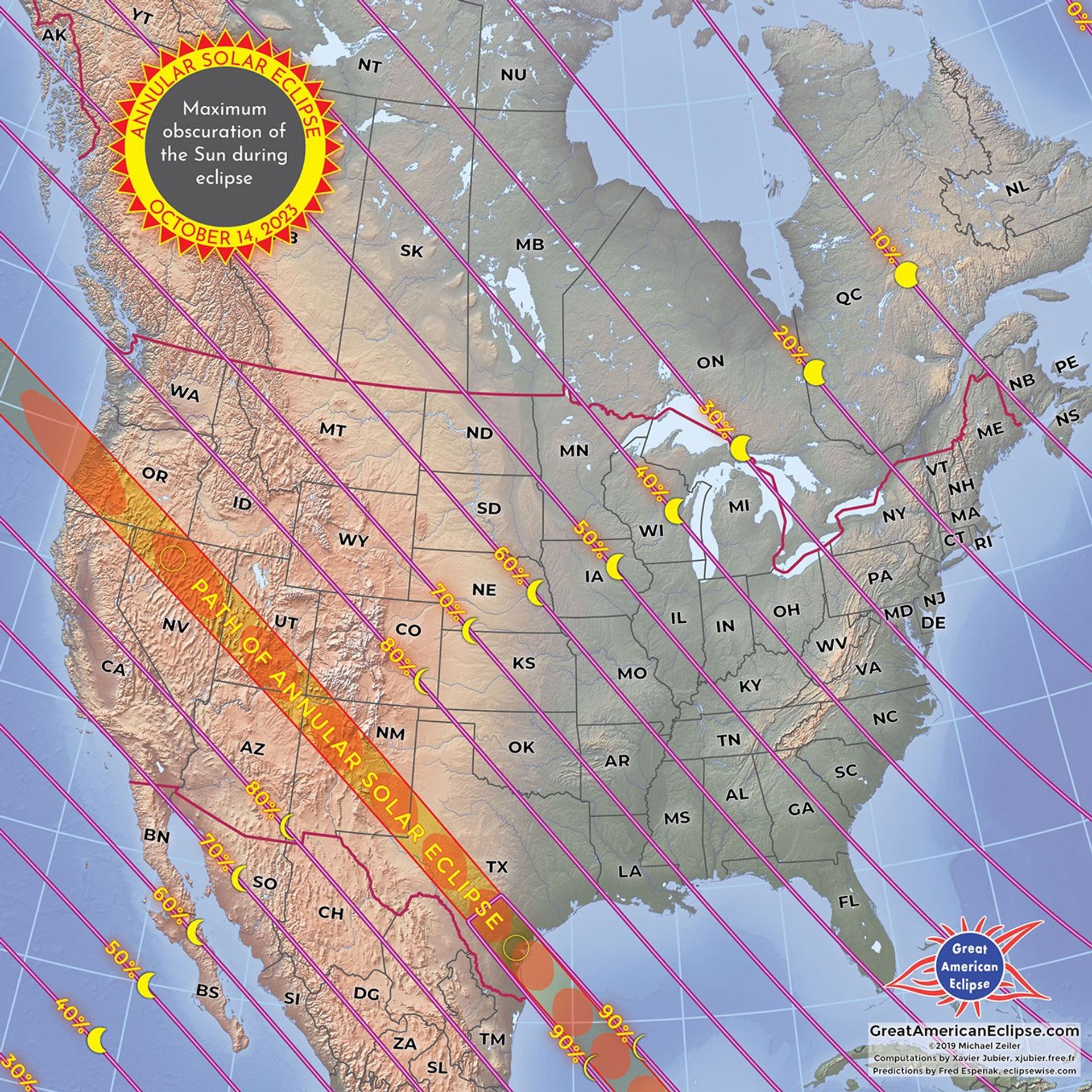The eclipse on Saturday, Oct. 14, 2023, will be an annular solar eclipse. An annular solar eclipse happens when the Moon passes between the Sun and Earth while it is at its farthest point from Earth. Because the Moon is farther away from Earth, it appears smaller than the Sun and does not completely cover the star. Because the Sun is never completely covered, observers must wear proper eye protection at all times while watching an annular eclipse.
What you can see during an annular eclipse depends on the weather and the location from which you view it.
Weather. You need a clear view of the Sun and Moon to see the eclipse. However, even with cloud cover, the eerie daytime darkness associated with eclipses is still noticeable.
Location. To see all phases of an annular eclipse, you must view it from somewhere along the path of annularity: the locations on Earth from which the Moon will appear to pass across the center of the Sun. The path of annularity across North America for the Oct. 14, 2023, annular eclipse is shown below. More detailed map views, including the timetable of each phase of the eclipse at select locations, are available here.
Phases of an Annular Eclipse
Partial Eclipse
As the Moon begins to pass in front of the Sun, it will produce a partial eclipse. The Moon will slowly block more and more of the Sun’s light, making the Sun appear as a smaller and smaller crescent before it forms a “C” shape. This phase is also known as first contact.
Annularity
About an hour and 20 minutes after the partial eclipse phase begins, the Moon will pass completely in front of the Sun, leaving a “ring” of Sun visible from behind the Moon. This period is known as annularity, or second contact. It will last between 1 and 5 minutes for most places, depending on where you view it from. During the eclipse, the sky will grow dimmer, though not as dark as during a total solar eclipse. Some animals may begin to behave as if it is dusk and the air may feel cooler.
Return to Partial Eclipse
The Moon will then continue passing across the Sun’s face for about an hour and 20 minutes, producing another partial eclipse phase. This phase is also called third contact.
Partial Eclipse Ends
The Moon continues to move until it no longer overlaps the Sun's disk. The eclipse is over. This phase is also known as fourth contact.
























